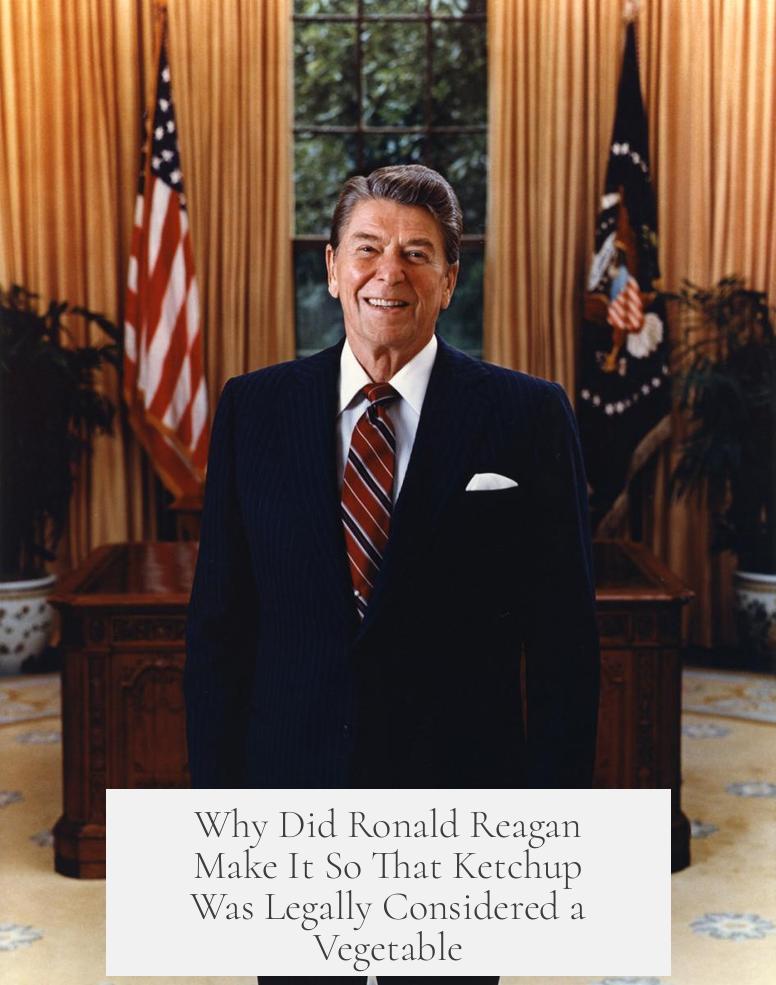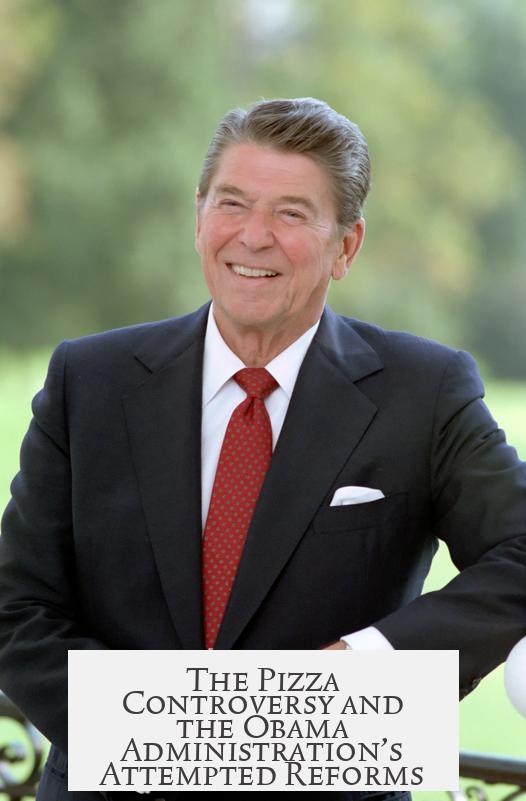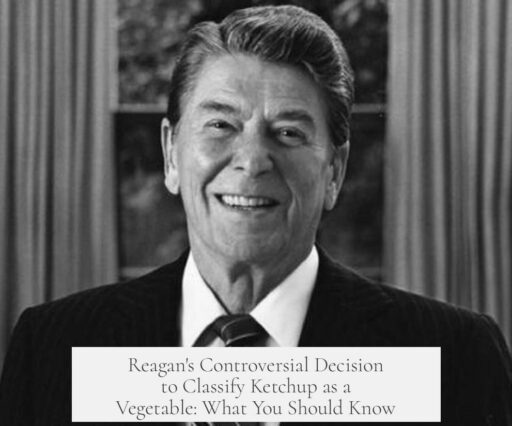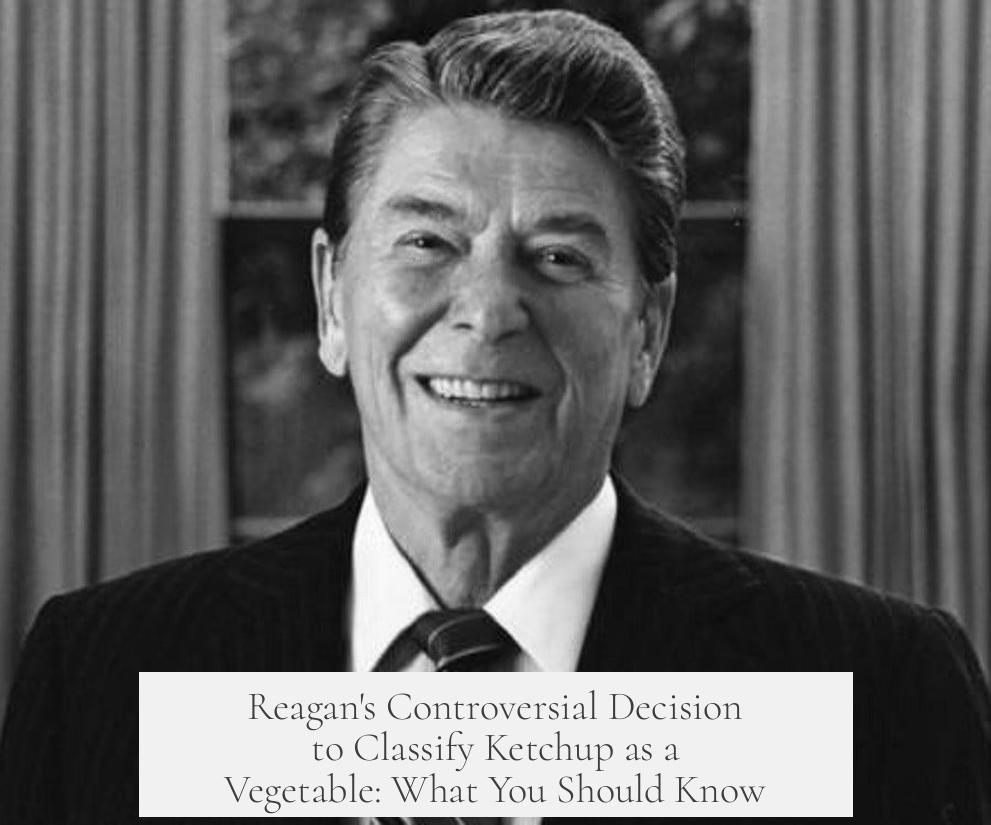Ronald Reagan did not legally classify ketchup as a vegetable, nor was any bill passed to that effect. The notion that ketchup became a vegetable under Reagan’s administration is a myth. What actually happened relates to a crisis in school lunch program funding during the early 1980s. The USDA’s Food and Nutrition Service (FNS) proposed new rules to ease compliance and costs for schools delivering meals that met nutritional standards.
The proposal suggested giving State agencies discretion to decide how certain foods counted toward vegetable servings. For instance, a state might treat condiments like pickle relish as vegetables. This idea fueled the mistaken belief that ketchup was officially considered a vegetable. However, this rule change was never adopted, and the concept never entered law or school guidelines.
The backdrop for this proposal was sharp budget cuts. Federal funding for the school lunch program dropped by 25% in 1981, adding to an earlier 8% cut in 1980, resulting in nearly a third reduction over two years. Eligibility for free lunches tightened, and subsidies for paid meals declined, making lunches less affordable.
Faced with these challenges, the FNS sought rule changes to maintain the availability and affordability of school meals. The intent behind allowing more flexibility with food crediting was to keep free lunches accessible and paid meal costs manageable despite reduced budgets.
Reagan’s administration did not create the ketchup-as-vegetable rule, but the administration’s funding cuts motivated the FNS to explore such proposals. The “ketchup as a vegetable” claim is a misunderstanding of the proposed but rejected rule changes amid budget constraints.
- No law ever declared ketchup a vegetable in school meals.
- The USDA proposed relaxed rules to cope with deep funding cuts in the school lunch program.
- States were given discretion to count some condiments as vegetables—this did not become policy.
- Reagan’s budget reductions indirectly triggered efforts to simplify nutrition rules.
- The myth persists despite clear evidence showing no official change was enacted.
Why Did Ronald Reagan Make It So That Ketchup Was Legally Considered a Vegetable?

Here’s the scoop: Ronald Reagan did NOT actually make ketchup a vegetable by law. Despite the spicy myth that’s simmered for decades, no bill ever passed to officially label ketchup as a vegetable in school lunches.
So, why does this urban legend exist? Let’s unravel this tangy tale and get to the real juice behind the ketchup controversy in school lunch programs.
The Origin of the Ketchup-as-a-Vegetable Myth
Back in the early 1980s, the School Lunch Program faced a serious funding squeeze. From 1980 to 1981, federal funding for school lunches was slashed by about 33%, thanks to budget cuts started under President Carter and deepened by President Reagan’s administration. This big drop meant fewer free meals for kids and higher prices for those paying.
To deal with this financial crunch, the USDA’s Food and Nutrition Service (FNS)—the folks managing school meal rules—looked for ways to keep lunches affordable and meals as nutritious as possible within tighter budgets.
What did they propose? A somewhat cheeky idea: allow states more flexibility to count certain condiments or concentrated foods as vegetables. For example, a condiment like pickle relish could potentially count as a vegetable serving. This didn’t explicitly say “ketchup is a vegetable,” but it opened the door to such interpretations.
Did Ketchup Actually Become a Vegetable?
Short answer: No. The proposed rule changes that might have let ketchup count as a vegetable were met with swift criticism and were never adopted by the USDA. The idea of ketchup as a vegetable never legally took hold in school lunch programs.
However, what DID change was a loophole concerning tomato paste and other concentrates. Instead of counting the bulk volume as served, a tablespoon of tomato paste could be treated as if it were reconstituted to its original volume. In real terms, one tablespoon of tomato paste could be credited as 1/4 cup of single-strength tomato juice or vegetables!
This meant that certain processed foods using tomato paste, like pizza sauce, could technically count toward the vegetable servings in school meals. In other words, a slice of pizza with enough tomato paste could be called a vegetable-serving. Now, this rotation added fuel to the “pizza is a vegetable” debate, which, as you can imagine, made headlines and sparked outrage.
But What About Reagan? Did He Influence This?
President Reagan himself didn’t pass any law labeling ketchup a vegetable. But his budget cuts put the USDA in a tough spot. With fewer dollars, FNS sought practical ways to keep school lunch programs running smoothly without massive price hikes or reducing meal availability.
So while Reagan was not the chef behind the ketchup rule, his fiscal policies indirectly created an environment where the USDA tried to stretch meal rules to cover costs.
The Pizza Controversy and the Obama Administration’s Attempted Reforms

Fast forward to 2011. The Obama administration tried to tighten school lunch rules in two critical ways:
- Limit starchy vegetables (potatoes, corn, peas) to one cup per week to encourage kids to try healthier, more diverse veggies. This move didn’t thrill the potato-fry lobby.
- Count tomato paste and puree based on actual volume served, rather than reconstituted volume. This aimed to stop foods like pizza from sneaking in as vegetable servings.
Food industry firms that supplied schools with processed potato products and tomato-intensive foods pushed back hard, leading to a congressional bill that blocked these USDA efforts. This sparked the “pizza is a vegetable” controversy around 2011-2012, once again stirring media frenzy.
In the end, the rule allowing two tablespoons of tomato paste to count as one vegetable serving remains officially on the books.
What Can We Learn From This Tomato Tale?
This story highlights a deeper truth about school nutrition and government regulations: These rules evolve in a complex mix of budget constraints, food lobbying, and nutritional science.
Trying to keep meals affordable and widely available sometimes leads to quirky compromises. The ketchup-as-a-vegetable myth oversimplifies a complicated budget and policy battle but provides a fun window into how policy and politics mingle in unexpected ways.
Next time you see pizza in a lunch line, think twice before dismissing the nutritional value entirely. If nothing else, those two tablespoons of tomato paste might just sneak in a vegetable serving after all.
Final Thoughts and Recommendations
- If you’re a parent or educator, know that school lunch guidelines are shaped by funding realities. Advocacy for better funding and healthier meals is key.
- Curious about what’s really on your kid’s plate? Many schools publish nutrition info online—dig in and stay informed.
- Craving a true serving of veggies? Add fresh tomatoes, cucumbers, or carrots to your child’s lunchbox—the real deal is always best!
“Ketchup isn’t a vegetable, but it reminds us that nutrition policy is never just about food—it’s about dollars, politics, and a dash of creativity.”
So, did Reagan really make ketchup a vegetable? No. But his budget cuts set off a chain of events that brought us close to a tomato-based loophole that still tickles policy wonks and food lovers alike. The next time someone tells you ketchup is a vegetable by law, you’ll know the story isn’t quite that saucy.




